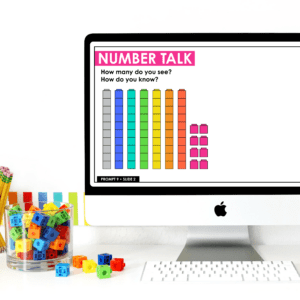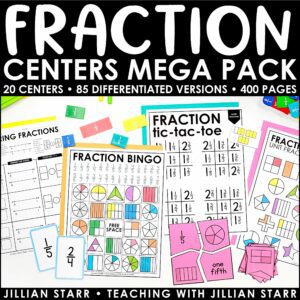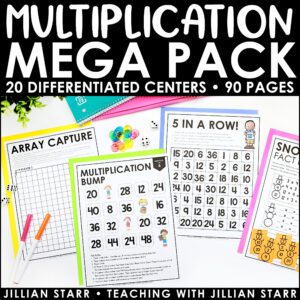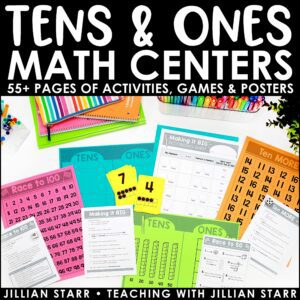When I talk to folks about Guided Math and teaching in small groups in my Facebook Group, one of the biggest push backs I hear is that teachers don’t feel that they have enough TIME to teach small groups. The interesting truth is that teaching in small groups actually gave me MORE time to teach math, AND that time was better spent.
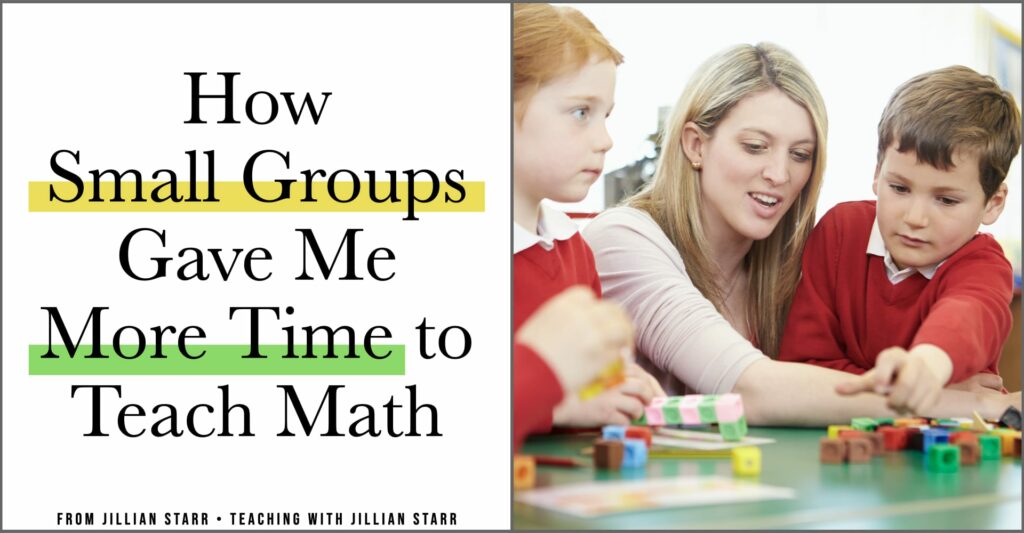
How is that possible you might ask? Well, let me explain three BIG ways that teaching in small group gave me back the time I was missing when teaching whole group.
1. Knowing What to Teach!
When I teach in small groups, I have the students doing the math right in front of me. I have the ability to focus on each student and their understanding of the concept or skill being taught. I notice right away if they’re struggling to understand something and can intervene immediately, instead of noticing AFTER I collect their work at the end of the math block.
When the students are in front of me in small groups, I know IN THE MOMENT when to move on and when I need to reteach, INSTEAD of constantly guessing and having to go back and reteach entire lessons when I guessed wrong.
2. Decreased Time Managing Behavior
When I used to teach whole class, I struggled with keeping my students engaged. A good chunk of my class already knew the content, and so they became bored and often displayed challenging behaviors. Those behaviors often interrupted our learning because I had to stop teaching to manage them.
On the opposite end, when students were struggling to learn the content, many stopped paying attention and began displaying challenging behaviors too. Speaking as a student who OFTEN struggled in school, I can say that I became a behavior because I would rather my friends see me as silly and disobedient then stupid. Because the lessons weren’t meeting me where I was, I proved to be a challenge to manage in class.
Now, small group work combined with differentiated centers means that my students are always doing “just right work.” They are highly engaged in their group work, as well as their independent centers. This high engagement level means that I had FAR FEWER behaviors to manage. With a sharp decrease in time spent on behavior management, I now had FAR MORE time to actually TEACH!
3. Small Groups = Built In Assessment
Teaching in small groups means I am CONSTANTLY performing informal assessments and collecting meaningful data. This is because I am working directly with the students, and I can watch as they attempt a math task and take notes on their understandings and misconceptions.
These daily informal assessments play a HUGE role in guiding my instruction. However they are naturally embedded within the small group structure, so they don’t take time away from my teaching.
That means that I actually GAIN teaching time by teaching in small groups. This is because I have cut down the need to administer separate assessments to gauge student understanding at different times throughout a unit.
While it takes a bit of front-loading to get our groups up and running, it saves me SO MUCH TIME during the school year that I can use to prep other parts our day and ensure that I keep working on my work-life balance!


